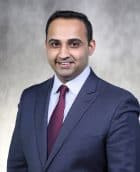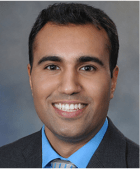Evidence suggests worse-than-normal outcomes in noncardiac surgery during the first month of the academic year (July). “This so-called ‘July effect’ has never been studied in cardiac surgery,” explains Rohan Shah, MD, MPH. For a study published in The Annals of Thoracic Surgery, Dr. Shah, Sameer Hirji, MD MPH (Co-first author), Tsuyoshi Kaneko, MD (Senior principal author), and colleagues examined whether patient outcomes after cardiac surgery were affected by procedure month or academic year quartile.
The researchers used the National Inpatient Sample to identify all adult patients who underwent coronary artery bypass grafting (CABG), surgical aortic valve replacement (AVR), mitral valve repair or replacement (MV), or isolated thoracic aortic aneurysm (TAA) surgery between 2012 and 2014. “We stratified our cohort into academic year quartiles and compared outcomes between Q1 (July-September) and Q4 (April-June),” notes Dr. Shah.
No evidence was observed of the July effect for major cardiac surgical procedures on a national level, says Dr. Hirji. “Differences in mortality, in-hospital complications, costs, and length of stay were not clinically meaningful between patients admitted in Q1 and those admitted in Q4,” he explains. Dr. Shah adds that teaching hospitals did not perform worse than non-teaching hospitals in regard to in-hospital mortality. “In fact, teaching hospitals performed better than non-teaching counterparts for complex heart valve procedures,” he says.
The researchers hope that such studies help reinforce the fact that clinical procedures and hospital systems have multiple processes that help provide the highest level of care. “Our findings demonstrate that hospitals will always continue to provide the best care possible for their patients and ensure patient safety,” says Dr. Hirji.
Adding to Dr. Hirji sentiments, Dr. Kaneko says, “Our findings highlight the pivotal role of appropriate resident teaching without compromising patient outcomes.” He notes, though, that questions remain, including: “Is the level of autonomy that residents get in July adequate? Are there different experiences among each institution regarding their training? How do you assess individual progression while maintaining excellent outcomes? These will require more granular data and collaboration among large institutions and the Society for Thoracic Surgeons.”




